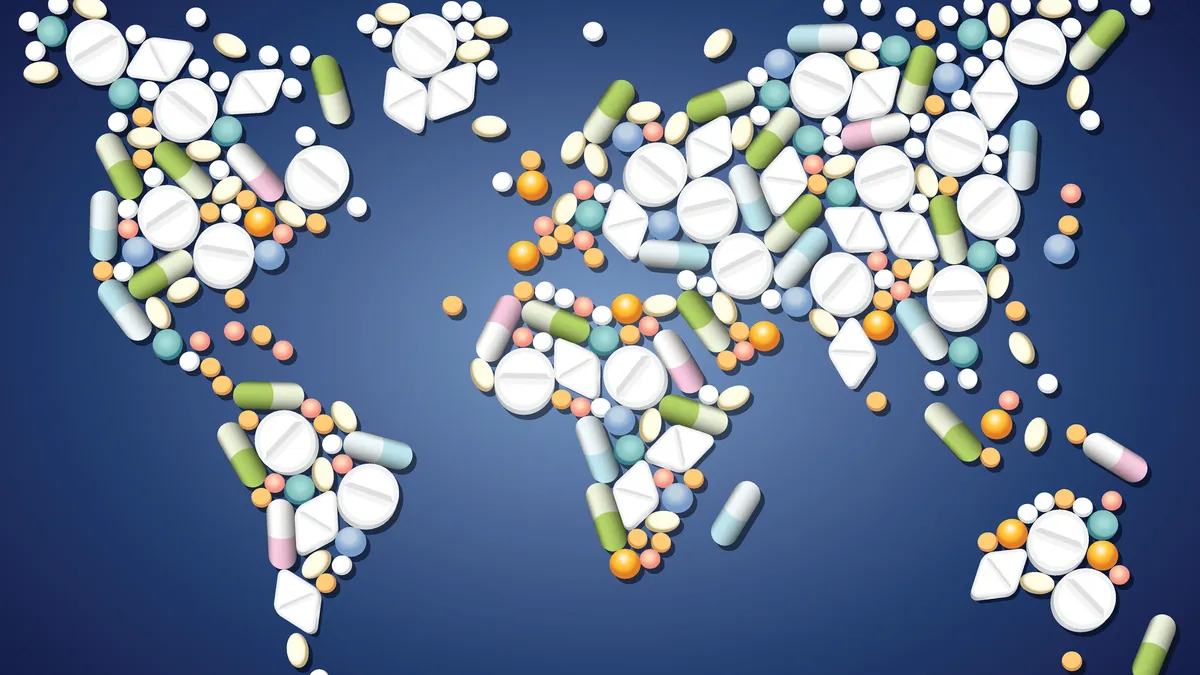Getting life-saving medications into the hands of people around the world remains a top priority for pharma companies. But whether those efforts are working is up for debate.
A new report from the Access to Medicine Foundation, a nonprofit that tracks how well the industry develops and provides medicines, has shed more light on Big Pharma’s global access initiatives.
On the one hand, 19 out of the top 20 companies in the report had some way of tracking patient reach for critical drugs in low- and middle-income countries. But there’s an underlying challenge for determining success.
“Currently there is no consensus on how the industry should calculate the numbers of patients being reached, with a variety of methods being employed,” the report said.
For instance, while AstraZeneca, Novartis and Roche have detailed nuanced methods for tracking the reach and success of their patient access programs, AbbVie didn’t report having a process for measuring access.
In fact, the report identified 42 different approaches to patient reach — 80% were product-related involving the sale or donation of drugs in a company’s portfolio. But as the report noted, “just because a product is delivered, does not mean it successfully reaches the patient.”
Significantly fewer included non-product activities like disease awareness campaigns and health education.
And while pharma loves to tout its commitment to access, transparency around their specific goals remains an issue. Some provided the Access to Medicine Foundation with details about how they measure patient reach publicly, but 11 pharmas — Astellas, Bristol Myers Squibb, Boehringer Ingelheim, Daiichi Sankyo, Eisai, Gilead, GSK, Johnson & Johnson, Merck KGaA, Pfizer and Roche — provided “insights into their processes for measuring patient reach partially or entirely under an NDA,” the report said.
The report was released ahead of the Access to Medicine Index, which scores 20 companies on drug access every two years and is slated for publication in November.
Here’s a closer look at key findings about three companies who scored high in the report.
Novartis
Key takeaways: Novartis was a standout for how it publicly reports patient access efforts and measures progress. For instance, Novartis takes additional steps to provide more precise patient access numbers that go beyond typical industry approaches. While most companies use a volume-to-doses formula to measure reach, Novartis ups the ante by integrating World Health Organization-guided assumptions about treatment adherence and goes further by integrating country- and product-specific data, the report said.
The report also lauded Novartis’ reporting of current and previous patient reach numbers to measure progress; its sustainability-linked bonds with clearly calculated patient access targets; and its patient reach work encompassing every country in which it operates.
Notable initiative: Novartis committed to increasing patient reach in low- and middle-income countries by at least 200% — to 1.6 million patients — by 2025. The company said it reached its goal in 2023. Novartis also has an emerging market brands program, which aims to make medicines more affordable in resource-limited settings.
Eli Lilly
Key takeaways: Eli Lilly combines various patient access initiatives and reports how it tracks those numbers through a combination of sales data, product donations and individuals reached through partnership programs. Additionally, it disclosed the metrics, underlying equations and assumptions for the measurement process of one of its key programs, Lilly 30x30, and earned praise for publishing patient reach numbers directly on its website.
However, the report also showed room for improvement. It pointed out that although Eli Lilly, Novo Nordisk and Sanofi control more than 90% of the global insulin market, the scale of their efforts to increase insulin access in low- and middle-income countries“seems limited compared to the growing burden of diabetes in these countries.”
Notable initiative: Eli Lilly aims to improve healthcare access for 30 million people in resource-limited settings annually by 2030, including at least 1 million people with diabetes in low- and middle-income countries. The company is also focusing specifically on diabetes. It has partnered with EVA Pharma to supply affordable insulin to at least 1 million people with type 1 and type 2 diabetes in those countries and works with the diabetes charity Life for a Child to expand drug access to roughly 150,000 children annually.
Bayer
Key takeaways: In addition to being one of the few companies whose patient reach scope included reproductive, maternal and newborn health, Bayer stood out for establishing a Global Health Unit aimed at improving access to medicines in low- and middle-income countries. In addition, Bayer shared the most patient reach numbers and numbers from previous years in their reporting. It also provided a detailed approach to how its contraceptive products reach people in those countries, outlining a two-step process that extracts and cleans relevant sales data, then calculates the number of women reached, adding that it can further refine those numbers by whether the contraceptive methods are short or long acting.
Notable initiative: Bayer has committed to meet the contraceptive needs of 100 million women in low- and middle-income countries by 2030 with both short- and long-acting contraceptives, and outlined a comprehensive approach to track its progress. As of 2023, Bayer said it had already reached 46 million women.



















